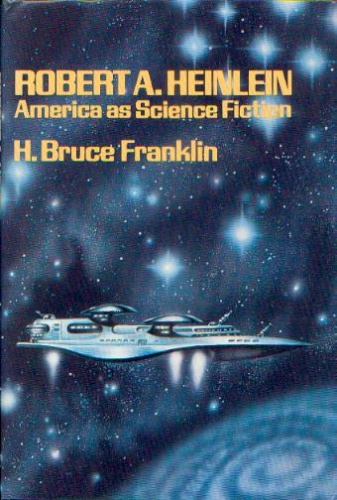The Golden Age of Science Fiction: Robert A. Heinlein: America as Science Fiction, by H. Bruce Franklin

The J. Lloyd Eaton Award was established in 1977 and initially was presented to the best critical science fiction book of the year. It was not presented in 1981, 1992, 1997, 1998, or 2000 and was put on hiatus after the 2001 awards were presented. When the award was started again in 2008, it was no longer given for a critical work, but rather for lifetime achievement. The award is presented at the annual Eaton Conference, held at the University of California at Riverside. The first Eaton Award was presented to Paul A. Carter in 1977 for his book The Creation of Tomorrow: Fifty Years of Magazine Science Fiction. In 1980, the winner was H. Bruce Franklin for his study Robert A. Heinlein: America as Science Fiction.
H. Bruce Franklin’s Robert A. Heinlein: America as Science Fiction was not the first book-length exploration of Heinlein’s life and writings, nor would it be the last, but it did take a unique view of Heinlein’s fiction, breaking his career into five segments and tying them to different aspects of American civilization.
Franklin opens his study with an exploration of Heinlein’s childhood, the small town of Butler, where he was born, and his father, uncle, and grandfather’s employment both there and in nearby Kansas City. Franklin isn’t merely giving background, but as he discusses Heinlein’s childhood, he ties the vicissitudes of his relative’s business ventures to Heinlein’s own take on the American dream and the way things work, or should work.
Once this background is out of the way, Franklin defines five periods of Heinlein’s writing, not only chronologically and thematically, but by tying each one to a specific period of American history. Heinlein’s earliest short stories, for instance, are linked to the Westward expansion and pioneer motif. The second period of Heinlein’s work was his emulation of the dime novels, when he was writing juvenile science fiction. This was followed by a third period which Franklin sees as mirroring the 1960s counterculture, during which Heinlein was writing. The seventies formed the fourth period with Franklin predicting a fifth period of Heinlein’s writing to kick off in 1980, the year following publication of Franklin’s study, with the publication of Heinlein’s own The Number of the Beast.